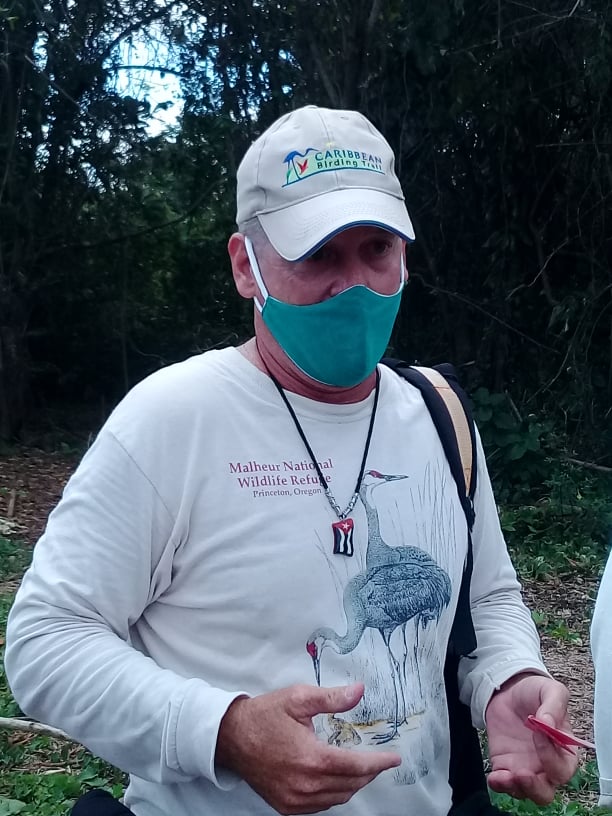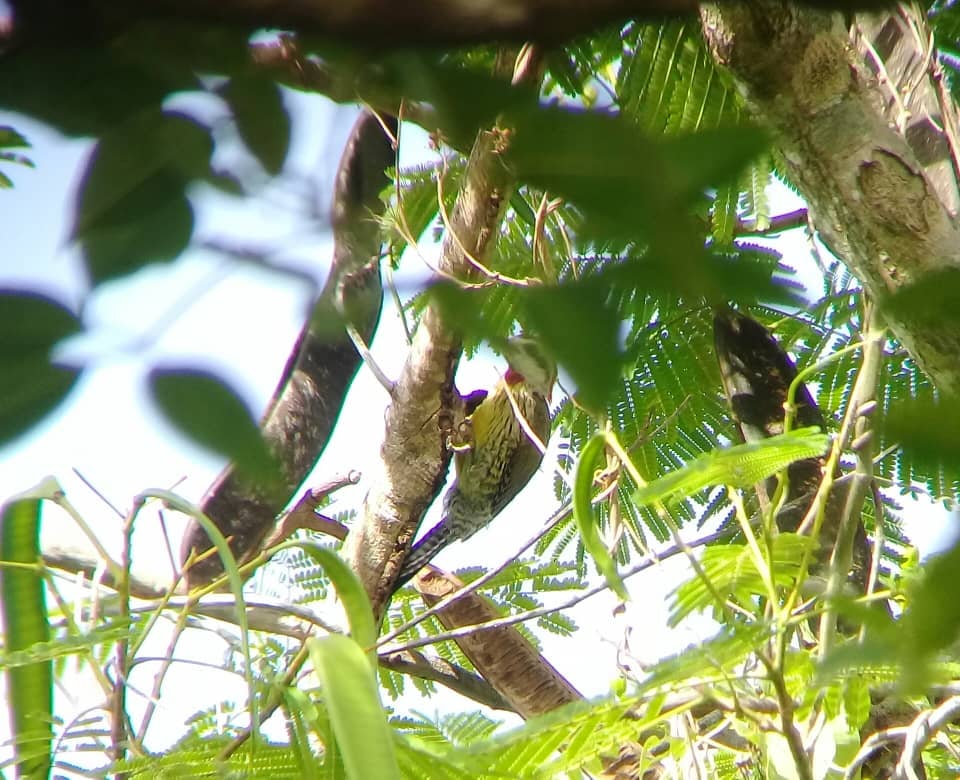
He invited a friend to La Loma de Cunagua in order to show him a tocororo, “I never imagined it was so close; he would have avoided such a long trip," Odey Martínez Llanes, a specialist at the Company for the Protection of Flora and Fauna of Ciego de Ávila, says.
The Cuban national bird is among the 99 species that have been identified in the area of ??the Humedal Grande Park, in the municipality of Morón, when evaluating the potential of the bird life, “because, without a doubt, these are the most colorful and charismatic terrestrial vertebrates, due to its color, size and behavior”, this biologist, with years of experience in the observation of birds that allow him to distinguish the sounds and to notice them easily in the dense mountains, assures.

He surprises with his ability to attract them, through the imitation of sounds and the use of a speaker that registers dissimilar songs. Thus he "enchants" the birds to confirm their presence and study them.
“In the Park, there are 18 endemic species (10 endemic ones and eight endemic subspecies, he clarifies), including cartacuba, tocororo, green woodpecker, totí, solibio, jabao woodpecker and arriero. Moreover, it is frequent to see bijiritas, which are migratory species. People have a special interest in the tocororo, with certainty I can affirm that many people in Morón have not seen it, only in books, and here they will be able to observe it ”, he expresses excitedly.
The Cuban crane, an endangered species "that many bird watchers miss because it lives in places that are difficult to access", was one of Odey's discoveries in the Humedal Grande Park, where he asserts the second most important identified population is found in the country, after the one in la Isla de la Juventud.

Keeping it there requires proper handling, "carrying out controlled burns so that the next day it goes to that site in search of dead animals that facilitate their feeding." They have observed three specimens in one place and the same number in another, which are in the reproductive stage. They are currently running checks to make sure they are not the same.
While walking along some trails in the Humedal Grande Park, in search of the Jabao woodpecker, the bird watcher tells us about the work that is done with the children to sensitize them with the care of the different species. They achieve this through interpretation techniques, with a pleasant language according to their ages, which facilitates understanding.
“The keeping of birds in captivity also responds to a cultural problem, therefore, it is necessary to educate, fundamentally to the new generations, to modify the habits. That is why I believe that we must work with children first”, he points out.
Aware of the existing problems in the Cuban archipelago with the hunting of species with aesthetic value and the illegal trade (mainly of parrots, azulejos, azulejones, mariposas, degollados, tomeguines del pinar y de la tierra, cabreros y negritos), he states that “ We must continue to gain awareness of the need to observe birds in their environment and not capture them, because this contravenes national laws aimed at their protection and affects other natural processes.
“The most predated ones, almost all of them are granivorous and contribute to reforestation, by spreading seeds through the forests while feeding. Others, such as kestrels, feed on insects that can constitute pests for some plantations. It is important that people know and it is achieved through environmental education”, he emphasizes.
The identification and knowledge of the bird life also allows their protection in exceptional situations. "For example, in a place where there are zunzunes, the day after a hurricane hits, we will have to put feeders to guarantee their feeding and, therefore, the preservation of the species."
Odey assures that, in its 11 hectares, the Humedal Grande Park will present the bird fauna as one of the main attractions for national and foreign visitors, therefore, a tourist product for bird watching is planned, a very interesting option for Canadian, American and British tourists. Meanwhile, for the natives, it will be the opportunity to appreciate species such as the tocororo and rethink about the convenience of keeping the birds in their natural environment.
